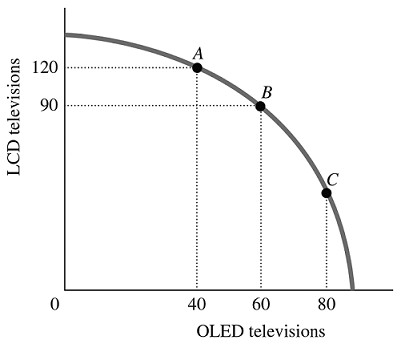Amy spends $5,000 on remodeling a storefront that she then opens as a take-out deli. Business has not been very successful, and she needs an additional $1,000 to keep the deli open. Which of the following is true?
A. The $5,000 Amy spent on remodeling represents a part of the total variable cost of her business.
B. The $1,000 Amy needs to keep the deli open represents her total fixed costs.
C. The $1,000 represents her marginal costs of production.
D. The $5,000 Amy spent is a fixed cost of her business.
Answer: D
You might also like to view...
It is reasonable to expect that if one firm in an oligopolistic market raises price, the its competitors will do the same so that all firms can earn increased revenues
Indicate whether the statement is true or false
Given the aggregate demand curve, a beneficial supply shock will:
a. increase potential output and the price level b. decrease potential output and the price level. c. increase potential output and decrease the price level. d. decrease potential output and increase the price level. e. cause no change in potential output or the price level.
An example of a quantity restriction is
A) the minimum wage. B) an import quota. C) rent controls. D) price supports in agriculture.
Refer to the information provided in Figure 2.5 below to answer the question(s) that follow. Figure 2.5Refer to Figure 2.5. The economy is currently at Point A. The opportunity cost of moving from Point A to Point B is the
Figure 2.5Refer to Figure 2.5. The economy is currently at Point A. The opportunity cost of moving from Point A to Point B is the
A. 30 LCD televisions that must be forgone to produce 60 additional OLED televisions. B. 90 LCD televisions that must be forgone to produce 20 additional OLED televisions. C. 30 LCD televisions that must be forgone to produce 20 additional OLED televisions. D. 120 LCD televisions that must be forgone to produce 40 additional OLED televisions.